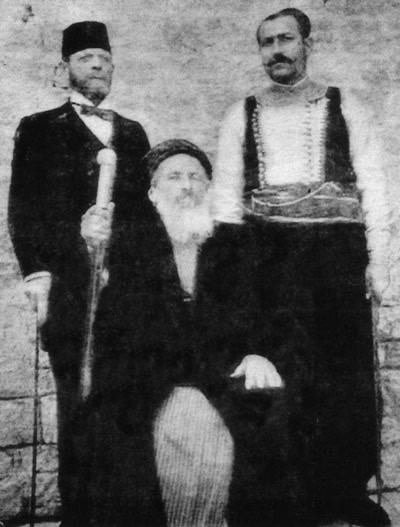|
Syrian Language (other)
{{Disambiguation ...
Syrian language may refer to: * Languages of Syria, several dialects of Arabic as well as other languages without official status ** Syrian Arabic language, encompassing all variants of Arabic language in Syria ** Syrian Turkish language, encompassing all variants of Turkish language in Syria ** Syrian Hebrew language, referring to local variants of Hebrew language in Syria ** Neo-Aramaic language in Syria, referring to all variants of Neo-Aramaic language in Syria * Palaeo-Syrian language or Eblaite, an extinct Semitic language * Syriac language, an Aramaic language that emerged during the first century AD, literary language of various Christian communities See also * Syrian (other) Syrian people or Syrians are the majority inhabitants or citizens of Syria. Syrian may also refer to: People * Syrian diaspora, Syrian emigrants and their descendants living outside of Syria, as either immigrants or refugees * Native inhabitant ... [...More Info...] [...Related Items...] OR: [Wikipedia] [Google] [Baidu] |
Languages Of Syria
Arabic is the official language of Syria and is the most widely spoken language in the country. Several Arabic dialects are used in everyday life, most notably Levantine in the west and Mesopotamian in the northeast. According to ''The Encyclopedia of Arabic Language and Linguistics'', in addition to Arabic, the following languages are spoken in the country, in order of the number of speakers: Kurdish, Turkish, Neo-Aramaic, Circassian, Chechen, Armenian, and Greek, none of which are official. Historically, Aramaic was the lingua franca of the region before the advent of Arabic and is still spoken among Assyrians, and Classical Syriac is still used as the liturgical language of various Syriac Christian denominations. Most remarkably, Western Neo-Aramaic is still spoken in the village of Maaloula as well as two neighboring villages, northeast of Damascus. Syrian Sign Language is the principal language of the deaf community. Arabic Modern Standard Arabic (MSA) is ... [...More Info...] [...Related Items...] OR: [Wikipedia] [Google] [Baidu] |
Syrian Turkish Language
Syrian Turkmen, also called Syrian Turks or Syrian Turkish people (; ) are Syrian citizens of Turkish people, Turkish origin who mainly trace their roots to Anatolia (i.e. modern Turkey). Turkish language, Turkish-speaking Syrian Turkmen make up the Demographics of Syria#Ethnicity and religion, third largest ethnic group in the country, after the Arabs and Kurds respectively.. The majority of Syrian Turkmen are the descendants of migrants who arrived in Syria during Ottoman rule (1516–1918);. however, there are also many Syrian Turkmen who are the descendants of earlier Turkish settlers that arrived during the Seljuk Empire, Seljuk (1037–1194) and Mamluk Sultanate (Cairo), Mamluk (1250–1517) periods. Some estimates indicate that if Arabization, Arabized Turkmen (those who no longer speak Turkish as their main language) are taken into account, they form the second-largest group in the country.. The majority of Syrian Turkmen are Sunni Muslims. Syrian Turkmen share common g ... [...More Info...] [...Related Items...] OR: [Wikipedia] [Google] [Baidu] |
Syrian Hebrew Language
Syrian Jews ( ''Yehudey Surya'', ''al-Yahūd as-Sūriyyūn'', colloquially called SYs in the United States) are Jews who live in the region of the modern state of Syria, and their descendants born outside Syria. Syrian Jews derive their origin from two groups: from the Jews who inhabited the region of today's Syria from ancient times (known as Musta'arabi Jews), and sometimes classified as Mizrahi Jews (''Mizrahi'' is a generic term for the Jews with an extended history in Asia or North Africa); and from the Sephardi Jews (referring to Jews with an extended history in the Iberian Peninsula, i.e. Spain and Portugal) who fled to Syria after the Alhambra Decree forced the expulsion of the Jews from Spain in 1492. There were large communities in Aleppo ("Halabi Jews", ''Halab'' is "Aleppo" in Arabic) and Damascus ("Shami Jews") for centuries, and a smaller community in Qamishli on the Turkish border near Nusaybin. In the first half of the 20th century a large percentage of Syrian Je ... [...More Info...] [...Related Items...] OR: [Wikipedia] [Google] [Baidu] |
Neo-Aramaic Language In Syria
Arabic is the official language of Syria and is the most widely spoken language in the country. Several Arabic dialects are used in everyday life, most notably Levantine in the west and Mesopotamian in the northeast. According to ''The Encyclopedia of Arabic Language and Linguistics'', in addition to Arabic, the following languages are spoken in the country, in order of the number of speakers: Kurdish, Turkish, Neo-Aramaic, Circassian, Chechen, Armenian, and Greek, none of which are official. Historically, Aramaic was the lingua franca of the region before the advent of Arabic and is still spoken among Assyrians, and Classical Syriac is still used as the liturgical language of various Syriac Christian denominations. Most remarkably, Western Neo-Aramaic is still spoken in the village of Maaloula as well as two neighboring villages, northeast of Damascus. Syrian Sign Language is the principal language of the deaf community. Arabic Modern Standard Arabic (MSA) is the langua ... [...More Info...] [...Related Items...] OR: [Wikipedia] [Google] [Baidu] |
Palaeo-Syrian Language
Eblaite (, also known as Eblan ISO 639-3), or Palaeosyrian, is an extinct East Semitic language used during the 3rd millennium BC in Northern Syria. It was named after the ancient city of Ebla, in modern western Syria. Variants of the language were also spoken in Mari and Nagar. According to Cyrus H. Gordon, although scribes might have spoken it sometimes, Eblaite was probably not spoken much, being rather a written lingua franca with East and West Semitic features. The language was discovered through cuneiform tablets found in Ebla. Discovery The 1964 discovery at the Tell Mardikh site in Northern Syria of an ancient city from the second half of the third millennium BC completely altered archaeological knowledge of the time, as it indicated the existence of a contemporary urban culture during the Early Dynastic Period of Mesopotamia, within a geographic zone where, at the time, previous excavations had revealed nothing on the same scale. In agreement with Ignace Gelb's ... [...More Info...] [...Related Items...] OR: [Wikipedia] [Google] [Baidu] |

